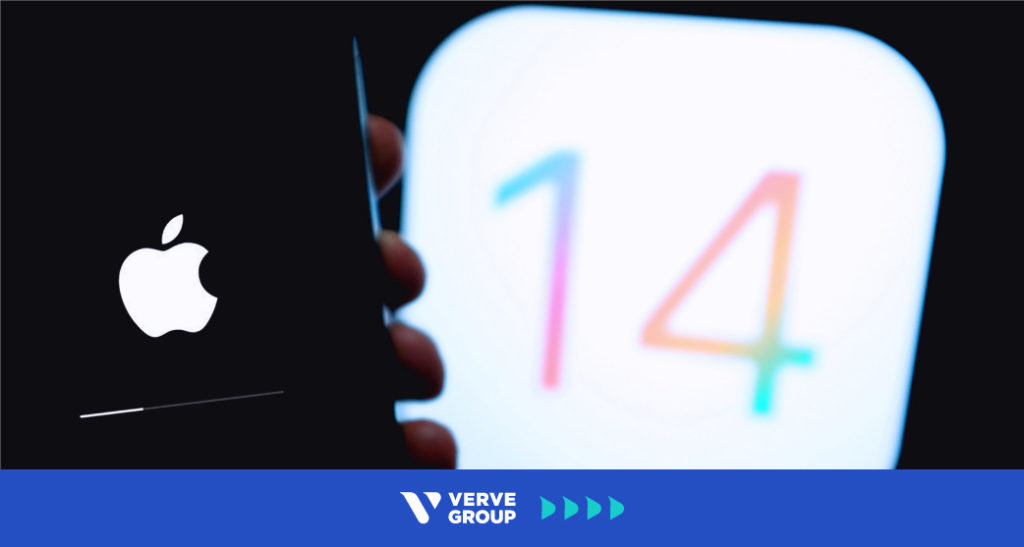Yesterday marked the eye of the storm known as iOS 14.5. The long-anticipated release date resulted in many app developers and publishers holding their breaths at 1:00 p.m. EST on April 26, when the update finally dropped. On the same day, eight German companies were reported to file antitrust complaints against Apple as they rolled out the iOS 14.5 update. Ad tech and excitement (or anxiousness, depending on how you look at it) have never been more synonymous.
To our publisher partners: while we have addressed iOS 14.5 readiness multiple times, it’s never been more important than it is now. First and foremost, we’d like to stress that all users will automatically be opted-out of tracking on iOS 14.5 unless they are shown the AppTrackingTransparency (ATT) prompt and choose to opt in for each app. Second — to mitigate any risks to your ad revenue — make sure to add the following to your checklist:
1. Establish a cross-functional task force for iOS 14 related changes
This point is least stressed on, but perhaps the most important. Ensure that knowledge is shared internally across the borders of the mobile developer team. That way user acquisition, data, user experience, and product teams are involved and can help monitor and optimize for iOS 14 inflicted changes.
2. Build and test your pre-permission prompt
Take the initiative to educate your users on the value of allowing ad tracking by creating a custom screen preceding Apple’s own permission prompt. Apple has put together a gallery of screenshots to show how to articulate the value to your users. Remember, Apple’s own system-side pop-up only allows for limited customization.
Users are likely to experience opt-in-prompt fatigue very quickly. To maximize your users’ opt-in rates, run A/B tests with different messaging, graphics, and timing to hit the right composition. Check out our iOS 14 opt-in guide for an interactive opt-in user journey.
3. Implement your monetization partners’ SKAdNetwork IDs
Add the SKAdNetwork IDs of your demand partners to your info.plist file in the right formats as Apple only accepts IDs with lowercase letters and will only send postbacks if the format is correct. To make your lives easier, we have prepared pre-formatted lists of all of our partners’ IDs in .json or .xml to copy and paste. Reach out to us if you have any questions on SKAdNetwork ID implementation. Our solution engineering experts will help you through its implementation.
4. Release your app with updated SKAdNetwork IDs
When you have added all partner SKAdNetwork IDs, release a new version of your app as soon as possible. Always have in mind that your users will need sufficient time on their end to update your app and enable new monetization partners to deliver ads.
5. Ensure you operate on an iOS 14 compliant version of our HyBid SDK
Our HyBid SDK (iOS v2.1.0 or higher) supports Apple’s ATT and SKAdNetwork framework. We highly recommend that your apps are updated to the latest version of the HyBid SDK to leverage iOS 14 related changes and other performance improvements that we frequently introduce to improve ad monetization.
6. Pass contextual signals in your bid requests
We encourage publishers to start including contextual parameters — based on the IAB’s OpenRTB 2.3 specifications — in their bid requests. We are testing new solutions based on contextual parameters to retain addressability for advertisers and ad-based monetization streams for publishers.
7. Switch to On-Device Audience Monetization
There are multiple alternatives to the IDFA explored in the industry today. It has to be mentioned, however, that many of these solutions are built on encrypted email addresses, which require user authentication. We are currently working on a proprietary on-device solution for monetization, that does not use any personal identifier including email addresses. This privacy-first solution will be exclusively available via our HyBid SDK. More information on that will be published soon.
If you would like to learn more about these alternatives, we recently published an article on the new privacy-focused normal.
Finally, in case you are not integrated via our HyBid SDK yet, we would strongly advise upgrading to an SDK integration in order to future-proof your apps and secure your ad revenue streams. You will find our open-source SDKs and release notes directly on our GitHub.
If you have any questions around iOS 14.5 or our HyBid SDK, do not hesitate to contact us. We are here to help you through this transition.





